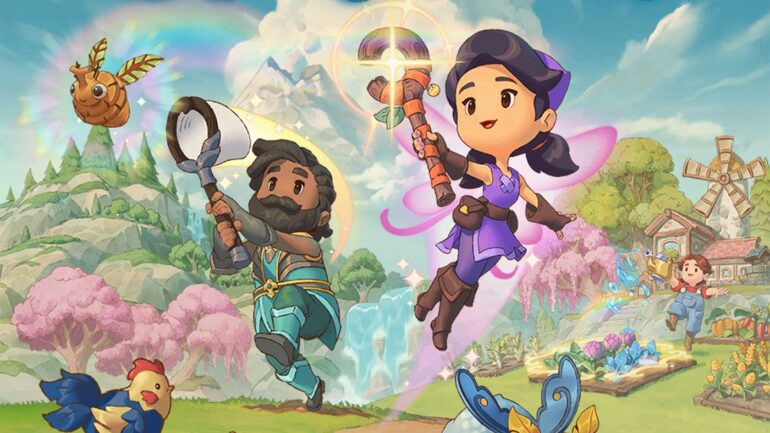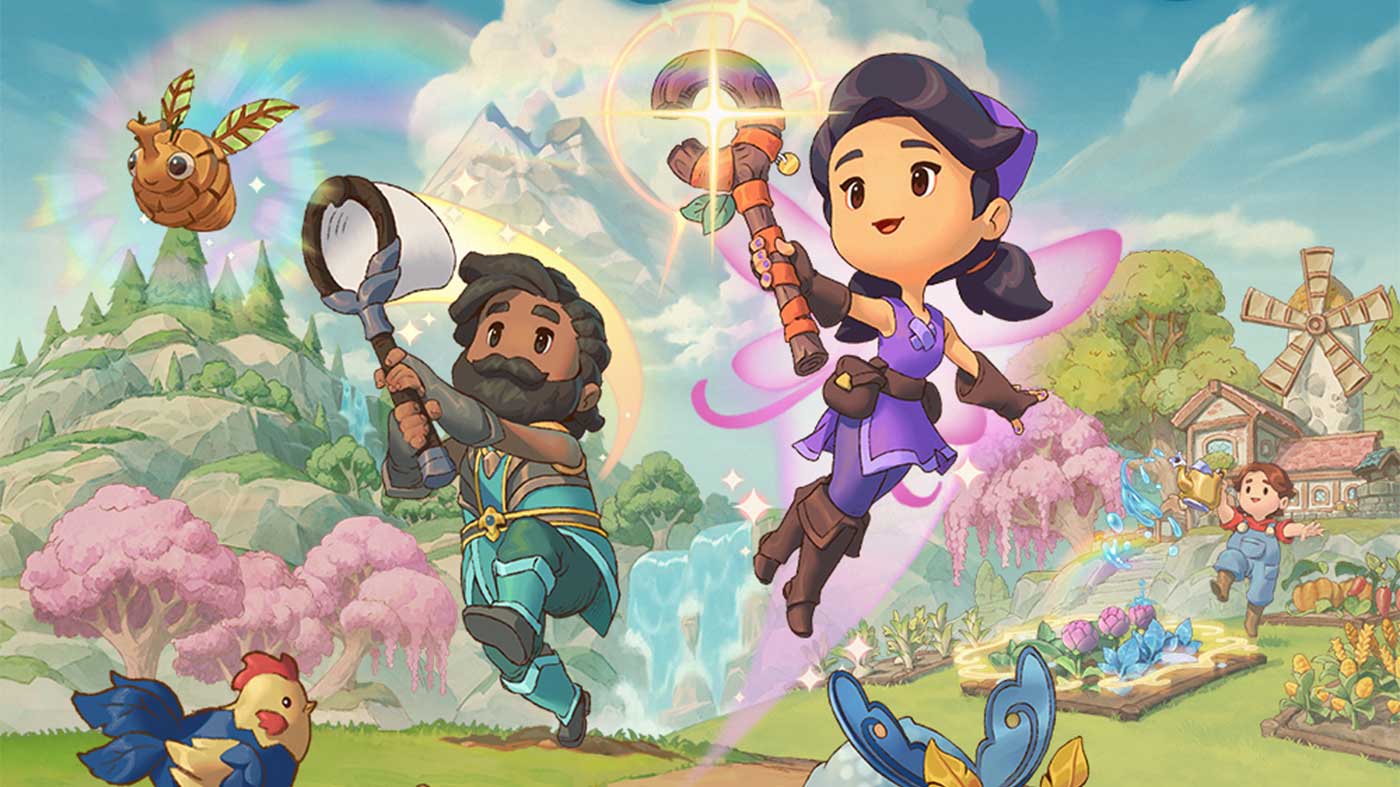Although the genre’s had its longstanding franchises and enjoyed a healthy audience dating as far back as the 90s, it feels like the farming/life sim video game market has been particularly prevalent since games like Stardew Valley and Animal Crossing New Horizons exploded in popularity. It’s at a point now where we can’t have a Nintendo Direct showcase without at least a triple threat of farming and crafting sims showing up, a fact that’ll either delight or enrage depending on your tastes. With so many time-sink experiences vying for your attention, new players on the scene really need to offer something unique or top-notch to pull folks away from the usual heavy hitters, and Fae Farm makes a genuine attempt to stand out from the crowd.
It all starts about as stock-standard as you could expect. Your character, whose look and name are yours to tailor, finds themselves as a new resident on the mysterious island of Azoria in an (honestly ill-advised) attempt at a sea change. Although sporting a tremendously friendly populace and seemingly idyllic surrounds, it turns out that Azoria isn’t without its issues and quirks. For one, natural disasters like whirlpools, blizzards, toxic miasma and volcanoes prevent any new outside visitors or resources reaching the community and block safe access to huge sections of the island. Less disastrous but still unexpected is the prevalence of magic throughout Azoria which manifests itself in a number of ways.
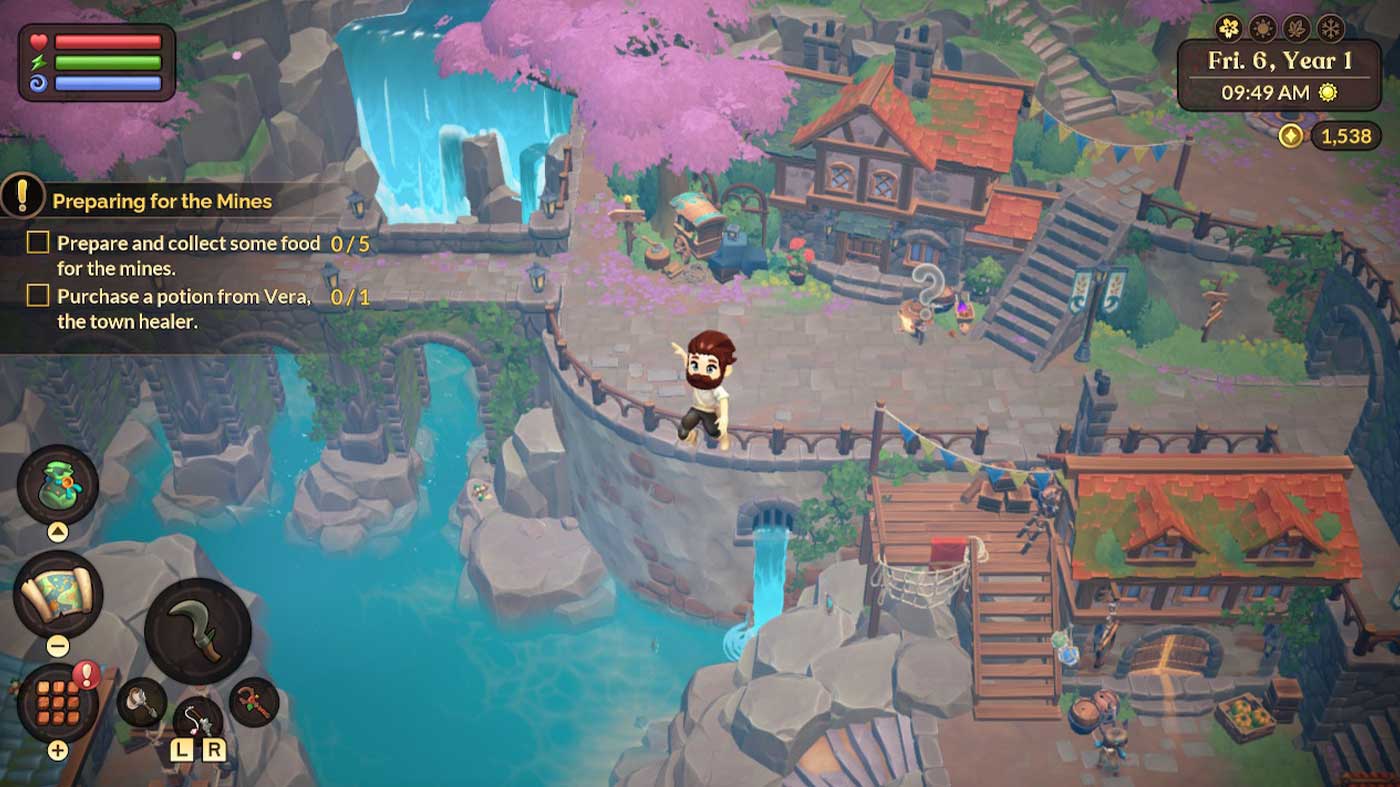
That’s predominantly where Fae Farm makes its boldest attempts at being more than just your average farming/life sim, imbuing a magical spin on most of the things you’ll spend your time doing on Azoria whether it’s farming, crafting, exploring or even venturing into mysterious new realms. There’s almost nothing that doesn’t have some kind of magically-powered mechanic or twist on the formula. Your crafting stations whirr to life and toil away autonomously, you can make place special seals in particular spots to teleport around, you’ll quickly gain a set of actual wings to help you reach new heights and there are even otherworldly animals to rear in your farms. None of it radically changes the fundamentals of the genre, but it makes for a nice point of difference and helps keep things interesting all the way through.
THE CHEAPEST COPY: $69 AT AMAZON WITH FREE SHIPPING
Aside from the usual activities like cultivating crops, mining minerals and selling your wares in the town market, a big chunk of your time will be spent restoring peace to Azoria by following along a main quest line and satisfying the demands of some of Azoria’s more mysterious and ethereal inhabitants. Most of these bigger tasks lie in wait at the end of lengthy “dungeon” type mining areas that you’ll need to traverse floor-by-floor with your stamina bar, the looming hour of midnight in the game’s daily cycle, and Jumbles – everyday objects animated by antagonistic spirits – all conspiring to cut your spelunking short. The trick in each one is to gather up their resources, return home to craft dungeon-specific teleportation seals, and place them on each floor to give you a deeper starting point on your next run.
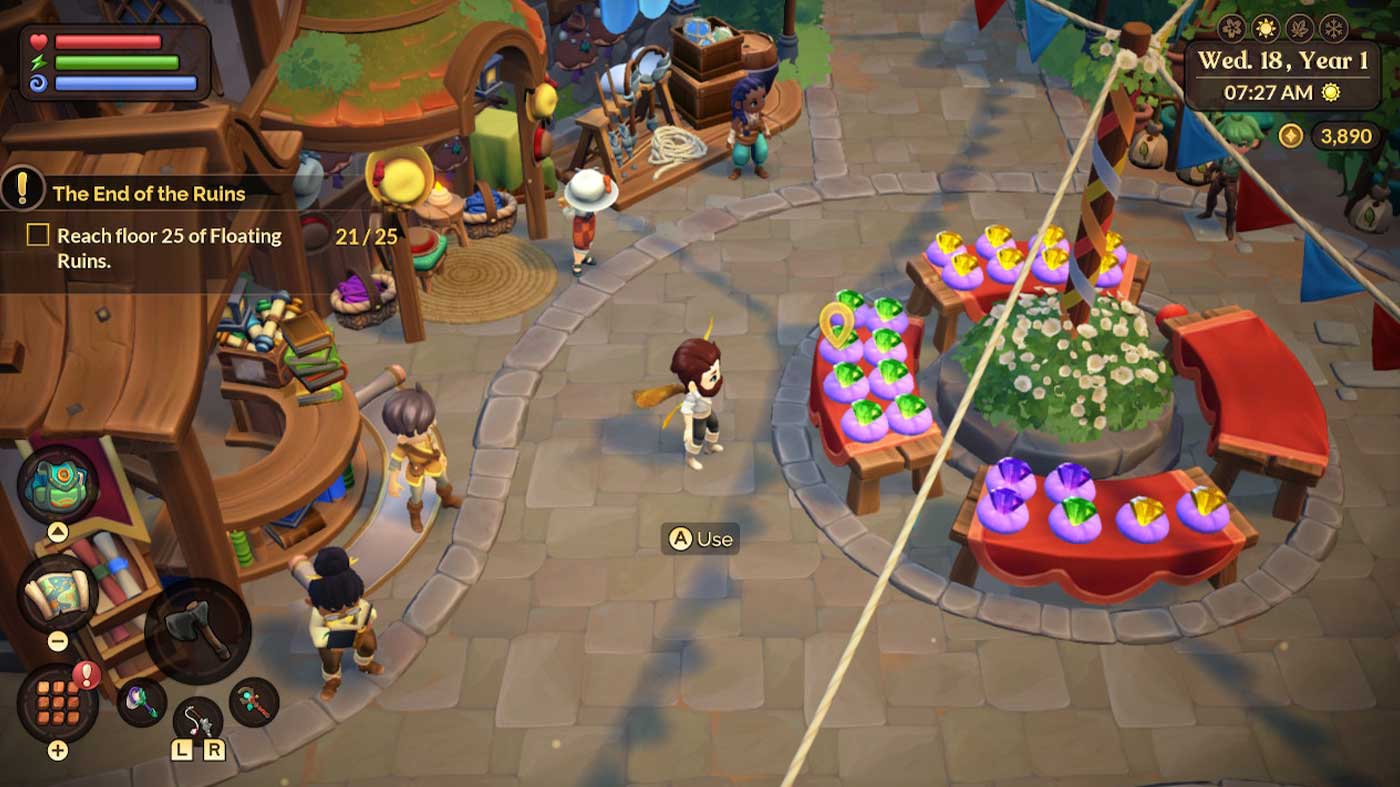
These dungeons are a novel way to make resource-gathering a little more interesting and gives you a clear goal to work toward if the sheer number of more everyday things to do as an Azorian resident give you paralysis of choice. Failing those, there are also plenty of side quests, seasonal tasks, romantic objectives and more to keep you striving for something and touching every aspect of gameplay that’s on offer. The game also does a commendable job of encouraging players to decorate and beautify their space, because placing certain decor inside your home grants bonuses to your health, stamina and mana making it easier to get further into the dungeons and collect even more resources each run.
As many neat ideas as Fae Farm brings to the table though, there are some fairly prominent issues that hold it back from being truly great. For starters, performance on the Switch is an absolute mess. There are frequent stutters and hitches throughout, often occurring at the worst possible moments like when you’re set upon by enemies in a dungeon, and I’ve had the game completely lock up on me multiple times – at one point ruining an in-game day’s worth of meticulous and luck-driven mining. The game has a colourful and lush look that’s super charming the majority of the time, but the vibe is consistently harshed by frustrating frame drops and freezes.
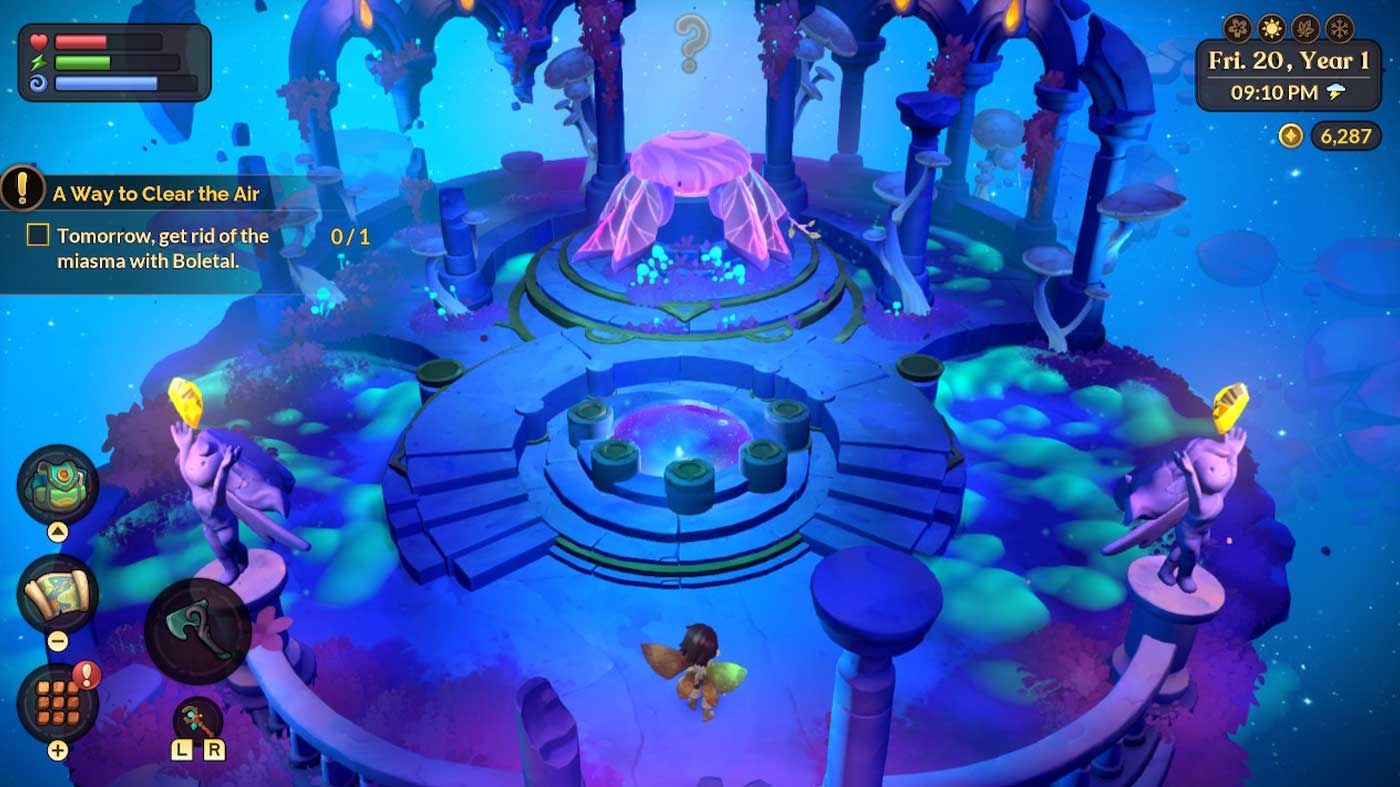
While I’m under the assumption that the above issues won’t be as crucial a point in the PC version of the game, that same air of ambition over execution is also baked into the game’s less surface-level qualities. There’s a breadth of systems at play here that consistently expand and multiple over time – to an impressive degree, to be fair – but by the time you’re dozens of hours in it’s hard to shake the feeling that there’s just too much here and yet somehow it’s all spread far too thin, perhaps for the sake of trying to satisfy sim and RPG fans in the same strokes.
As much as I gel with the idea of supplementing the life sim side of things, for example, the dungeons just aren’t that exciting and fighting the Jumbles gets old a handful of floors in, never mind multiple 25-floor gauntlets. The idea is sound but every floor is so similar and each dungeon so long that it gets tedious far too quickly. The same can be said of a lot of the game – there’s heaps to do and find but not a lot of nuance to any one aspect aside from very consistently having your progress and aspirations gated by the need for new (see: differently-coloured) iterations of your tools and resources.
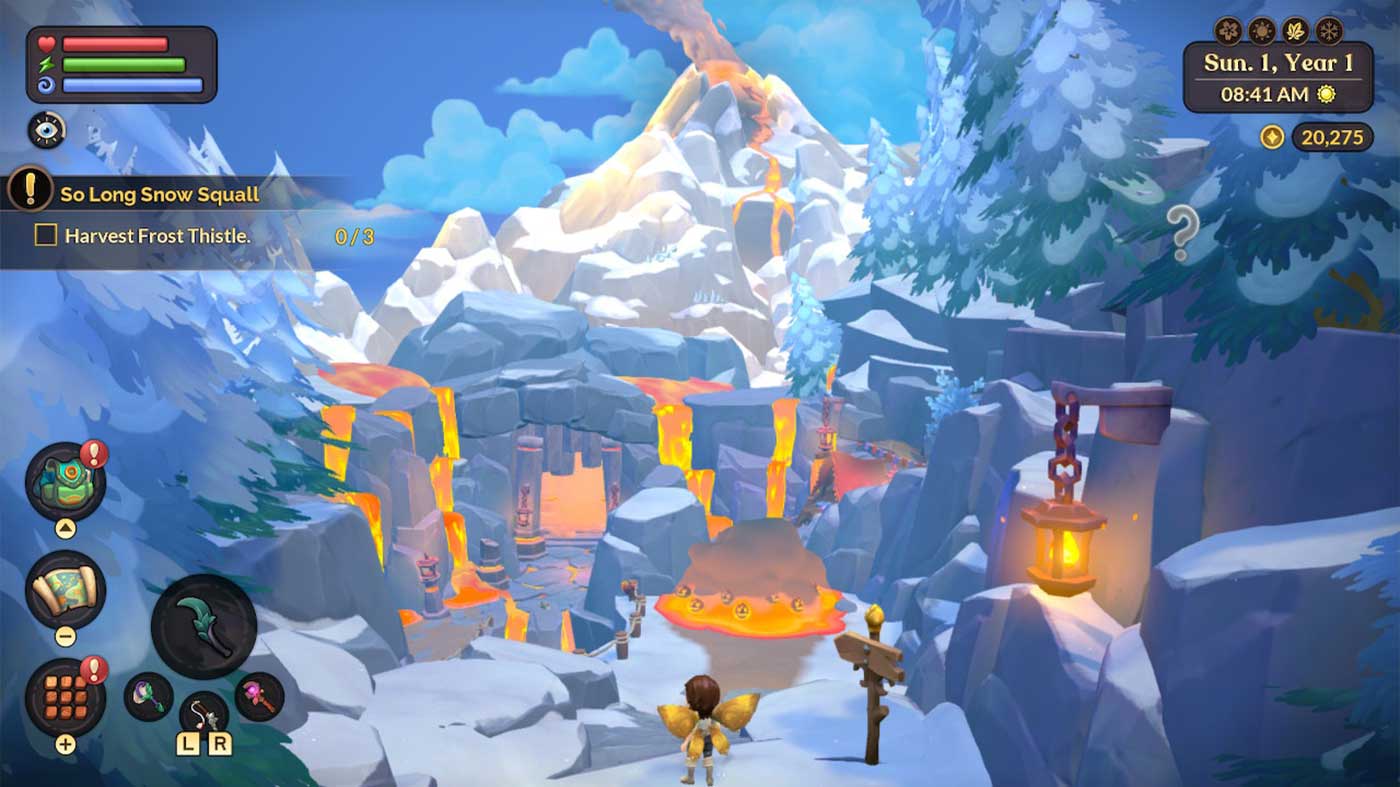
At the risk of sounding overly down on the whole thing though, I did quite enjoy my time with Fae Farm on the whole. If you have the patience to stick with it, and spend the time slowly churning through the core objectives until you’re truly free to work at settling into your life on Azoria, there’s a genuinely decent time to be had here. Aside from getting itself bogged down in stuff it’s got plenty of charm and enough unique ideas to make it stand out from the Harvest Moons and Stardew Valleys and earn a place in any budding magical agriculturalist’s library.
Regrettably, I haven’t been able to test out the game’s multiplayer functionality, but it seems fairly robust with cross-play enabled at launch and the folks at Phoenix Labs promising post-launch updates to make everything more permeable across different save states. There are also bold-sounding plans for post-launch content and quality-of-life updates as well, which hopefully will include some better systems to keep track of everything it has going on.


